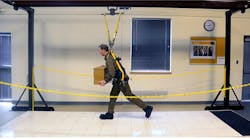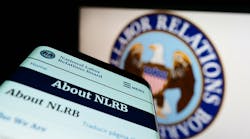Training at parcel delivery giant UPS leaves nothing to chance. It's a process filled with a lot of procedures that are deployed to create a culture. The culture in turn, which is also a process, can lead to increased sales opportunities.
Let's trace the process to understand the success. As is the case with many successful programs, the process was created based on a need. In this case, UPS found that its training wasn't proving to be effective. "Turnover was too high and retention too low," explains Dan McMackin of UPS.
The company turned to academia to find a solution. MIT, Virginia Tech and the Institute for the Future combined efforts and created the UPS Integrad program. The program addresses the need for experiential training, and was modeled on the philosophy of "teach me, show me, let me."
Built into the program are tools that reflect how young people learn in a digital culture. So the program uses a mixture of 3-D computer simulations, webcast learning modules and traditional classroom instruction to complement hands-on safety, delivery and customer service training at a facility that replicates all operations in a town setting.
UPS industrial engineers created "340 Methods" to be used at its 11,500 square-foot facility located in Landover, Md. The number 340 refers to the number of steps it takes to deliver a package and covers everything from how to sit down to insert the key to start the truck, to how to select a package, to how to properly step out of the vehicle to minimize pressure on the knees, to how to survey a property for misplaced rakes on the driveway.
Driver trainees have a say in the coursework. A customer satisfaction index-type survey is administered to students and adjustments are made based on results.
"By following these proven standards, we are able to measure performance and cost savings across the entire organization," says McMackin. "Results show an increase in driver proficiency, including a reduction in first-year injuries and auto crashes."
Nothing is left to chance. The driver's attitude, demeanor, customer service protocol and even the socks they wear combine to create a culture that is not only well-known to customers but provides a level of comfort that helps generate sales.
McMackin, who started with the company as a part-time driver during college and has held a variety of management jobs with the company, offers an example of how the training has helped the company win new business. An upscale mall had an image to uphold, and that meant that delivery companies that scuffed up their lovely new floors were not welcome.
Unkempt, impolite delivery personnel were not welcome either. But UPS, thanks to its rigorous training, was welcomed and won an exclusive contract to service the mall. (Of course it helped that UPS purchased special equipment so its delivery carts wouldn't scratch the floor.)
A polite culture was in fact the fundamental business behavior that UPS was built upon when it formed in 1907 and wanted to secure the department store market. To convince the stores that UPS could take over a business function they performed, not only did the founder, James E. Casey, make sure the drivers tipped their hats to the ladies (learned from a book outlining the rules of etiquette) but the Pullman brown uniform was based on the color of the railcars which were quite luxurious at the time.
Today, that same sales angle is incorporated in the training. There are four modules taught that are purely sales-focused. They cover all aspects of the company's services and teach new drivers how to look for sales leads and how to bring that information back to the company. Incentives for leads that turn into volume are available.
The training facility has been such a success that other locations such as Portland, Chicago and Phoenix now house training facilities. Two centers are about to open in Dallas and Menlo Park, with other sites being considered, including international locations.



